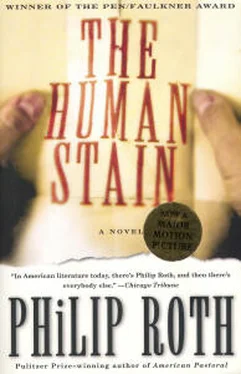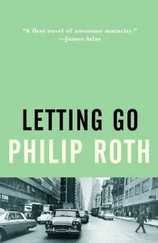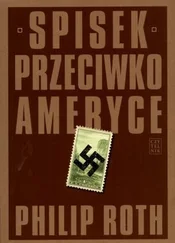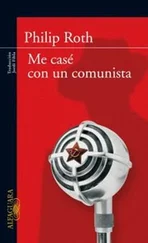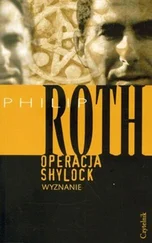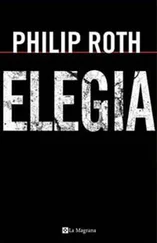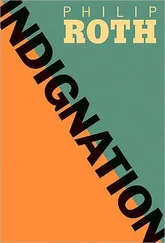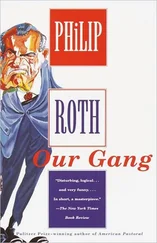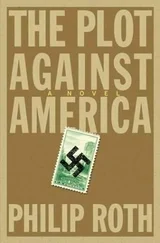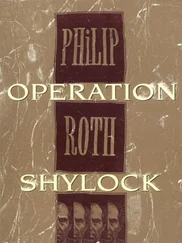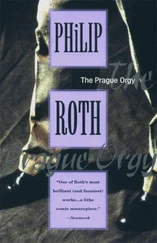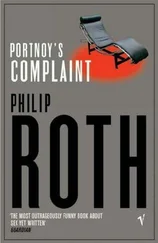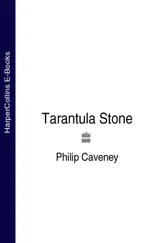Neither his mother's longevity nor her mortality could be allowed to have any bearing on what he was doing, nor could the struggles her family had been through in Lawnside, where she'd been born in a dilapidated shack and lived with her parents and four brothers until her father died when she was seven. Her father's people had been in Lawnside, New Jersey, since 1855. They were runaway slaves, brought north on the Underground Railroad from Maryland and into southwest Jersey by the Quakers. The Negroes first called the place Free Haven. No whites lived there then, and only a handful did now, out on the fringes of a town of a couple of thousand where just about everybody was descended from runaway slaves whom the Haddonfield Quakers had protected — the mayor was descended from them, the fire chief, the police chief, the tax collector, the teachers in the grade school, the kids in the grade school. But the uniqueness of Lawnside as a Negro town had no bearing on anything either. Nor did the uniqueness of Gouldtown, farther south in Jersey, down by Cape May. That's where her mother's people were from, and that's where the family went to live after the death of her father. Another settlement of colored people, many nearly white, including her own grandmother, everyone somehow related to everyone else. “Way, way back,” as she used to explain to Coleman when he was a boy — simplifying and condensing as best she could all the lore she'd ever heard — a slave was owned by a Continental Army soldier who'd been killed in the French and Indian War. The slave looked after the soldier's widow. He did everything, from dawn to dark didn't stop doing what needed to be done. He chopped and hauled the wood, gathered the crops, excavated and built a cabbage house and stowed the cabbages there, stored the pumpkins, buried the apples, turnips, and potatoes in the ground for winter, stacked the rye and wheat in the barn, slaughtered the pig, salted the pork, slaughtered the cow and corned the beef, until one day the widow married him and they had three sons. And those sons married Gouldtown girls whose families reached back to the settlement's origins in the 1600s, families that by the Revolution were all intermarried and thickly intermingled. One or another or all of them, she said, were descendants of the Indian from the large Lenape settlement at Indian Fields who married a Swede — locally Swedes and Finns had superseded the original Dutch settlers — and who had five children with her; one or another or all were descendants of the two mulatto brothers brought from the West Indies on a trading ship that sailed up the river from Greenwich to Bridgeton, where they were indentured to the landowners who had paid their passage and who themselves later paid the passage of two Dutch sisters to come from Holland to become their wives; one or another or all were descendants of the granddaughter of John Fenwick, an English baronet's son, a cavalry officer in Cromwell's Commonwealth army and a member of the Society of Friends who died in New Jersey not that many years after New Cesarea (the province lying between the Hudson and the Delaware that was deeded by the brother of the king of England to two English proprietors) became New Jersey. Fenwick died in 1683 and was buried somewhere in the personal colony he purchased, founded, and governed, and which stretched north of Bridgeton to Salem and south and east to the Delaware.
Fenwick's nineteen-year-old granddaughter, Elizabeth Adams, married a colored man, Gould. “That black that hath been the ruin of her” was her grandfather's description of Gould in the will from which he excluded Elizabeth from any share of his estate until such time as “the Lord open her eyes to see her abominable transgression against Him.” As the story had it, only one son of the five sons of Gould and Elizabeth survived to maturity, and he was Benjamin Gould, who married a Finn, Ann. Benjamin died in 1777, the year after the signing of the Declaration of Independence across the Delaware in Philadelphia, leaving a daughter, Sarah, and four sons, Anthony, Samuel, Abijah, and Elisha, from whom Gouldtown took its name.
Through his mother, Coleman learned the maze of family history going back to the days of aristocratic John Fenwick, who was to that southwestern region of New Jersey what William Penn was to the part of Pennsylvania that encompassed Philadelphia — and from whom it sometimes seemed all of Gouldtown had descended — and then he heard it again, though never the same in all its details, from great-aunts and great-uncles, from great-grear-aunts and -uncles, some of them people close to a hundred, when, as children, he, Walt, and Ernestine went with their parents down to Gouldtown for the annual reunion — almost two hundred relatives from southwest Jersey, from Philadelphia, from Atlantic City, from as far off as Boston, eating fried bluefish, stewed chicken, fried chicken, homemade ice cream, sugared peaches, pies, and cakes — eating favorite family dishes and playing baseball and singing songs and reminiscing all day long, telling stories about the women way back spinning and knitting, boiling fat pork and baking huge breads for the men to take to the fields, making the clothes, drawing the water from the well, administering medicines obtained mainly from the woods, herb infusions to treat measles, the syrups of molasses and onions to counter whooping cough. Stories about family women who kept a dairy making fine cheeses, about women who went to the city of Philadelphia to become housekeepers, dressmakers, and schoolteachers, and about women at home of remarkable hospitality. Stories about the men in the woods, trapping and shooting the winter game for meat, about the farmers plowing the fields, cutting the cordwood and the rails for fences, buying, selling, slaughtering the cattle, and the prosperous ones, the dealers, selling tons of salt hay for packing to the Trenton pottery works, hay cut from the salt marsh they owned along the bay and river shores. Stories about the men who left the woods, the farm, the marsh, and the cedar swamp to serve — some as white soldiers, some as black — in the Civil War. Stories about men who went to sea to become blockade runners and who went to Philadelphia to become undertakers, printers, barbers, electricians, cigar makers, and ministers in the African Methodist Episcopal Church — one who went to Cuba to ride with Teddy Roosevelt and his Rough Riders, and a few men who got in trouble, ran away, and never came back. Stories about family children like themselves, often dressed poorly, without shoes sometimes or coats, asleep on winter nights in the freezing rooms of simple houses, in the heat of summer pitching, loading, and hauling hay with the men, but taught manners by their parents, and catechized in the schoolhouse by the Presbyterians — where they also learned to spell and read — and always eating all they wanted, even in those days, of pork and potatoes and bread and molasses and game, and growing up strong and healthy and honest.
But one no more decides not to become a boxer because of the history of Lawnside's runaway slaves, the abundance of everything at the Gouldtown reunions, and the intricacy of the family's American genealogy — or not to become a teacher of classics because of the history of Lawnside's runaway slaves, the abundance of the Gouldtown reunions, and the intricacy of the family's American genealogy — than one decides not to become anything else for such reasons. Many things vanish out of a family's life. Lawnside is one, Gouldtown another, genealogy a third, and Coleman Silk was a fourth.
Over these last fifty years or more, he was not the first child, either, who'd heard about the harvesting of the salt hay for the Trenton pottery works or eaten fried bluefish and sugared peaches at the Gouldtown reunions and grown up to vanish like this — to vanish, as they used to say in the family, “till all trace of him was lost.” “Lost himself to all his people” was another way they put it.
Читать дальше
